|
The Charing Cross Library (where I presented "The Beatles: Band of the Sixties" last Friday) reviewed my program in their blog "Books & the City", which can be read by clicking here:
https://wcclibraries.wordpress.com/2015/07/22/fab-times-at-charing-cross/
0 Comments
Arrived back home in Connecticut last night around midnight, officially concluding my first English tour after a 43-hour door-to-door return travel from London. The biggest surprise of the whole trip was Iceland. I'd been to England once before, plus I'd researched all the Beatles hot spots in both Liverpool and London, so I knew more or less what to expect in both of those locations. Not so with Iceland.I had an 18-hour layover from 11pm to 5pm local time, so I slept in the terminal for a few hours then caught a bus from the airport to Iceland's capital, Reykjavic. Wandering around, I was struck by how colorful the architecture is. In that regard, it strongly reminds me of the La Boca neighborhood of Buenos Aires, Argentina. One house even had grass growing on the roof. Being in the middle of the Atlantic Ocean, Iceland (like Liverpool) is dominated by maritime culture and history. Downtown Reykjavic is centered around the "Old Harbor". In the harbor I found the museum Aurora Reykjavic, dedicated to the famous Northern Lights, one of the island's main tourist attractions. On display were some pretty impressive photographs of the phenomenon. In the museum's gift shop I found a variety of aurora-inspired jewelry known as the Von Collection, a series of unique homemade bracelets and necklaces. Since Natalie is fond of both auroras and necklaces, I kept an eye out for a necklace, but instead purchased this bracelet because of the iridescent aurora-like color of the stones. Reykjavic is also home of The Icelandic Phallological Museum - yes, an entire museum dedicated solely to penises. According to their brochure, the museum "contains a collection of more than two hundred penises and penile parts belonging to all the land and sea mammals that can be found in Iceland", including 17 different species of whale, 6 species of seal, and polar bear. My personal favorite was the walrus (goo goo k'joob), displayed with an accompanying poem. (Click the images below for full-sized pictures.) The gift shop featured lollipops, bottle openers, and candles among other souvenirs. But despite being one of (if not the) largest collections in the world, there was little more to the museum than the displays - no explanations or stories of why the specimens are significant or unusual in the animal kingdom. While humorous, I didn't find the museum enlightening or inspiring. Amusingly, the Phallological Museum is very near Hallgrimskirkja, probably the most famous building in Iceland and at 240 feet easily the tallest. Coincidence? I also visited the Reykjavic city library to see if they would be interested in a Beatles program. John Lennon is particularly popular there, largely because of Yoko Ono, who established the IMAGINE PEACE TOWER just north of the capital city on 9 October 2007 (what would have been Lennon's 67th birthday). The tower isn't a building but rather a very bright beam of light that shoots straight up into the sky, dedicated to John's memory. Since I was visiting during the daylight hours (at this time of year, Iceland gets about 21 hours of daylight and only 3 hours of darkness) the tower was not activated. On the second floor of the library was a display case filled with Lennon memorabilia. Normally I reserve my "The Beatles & The Avant-Garde" program for academic rather than public audiences, but given the circumstances it might be a particularly good choice if/when I'm back in Iceland.
From there I flew back to Boston Logan, shuttled to South Station, and caught a bus to Hartford. Thus concludes English tour number one; and all the pieces are in place for round two in the not-too-distant future! First of all, Heathrow airport is amazing! It puts every American airport I've ever been through to shame. It took maybe 20 minutes to from the moment I entered the building to when I was through security and waiting in the terminal. Unlike O'Hare, which had just two security checkpoints, Heathrow had 6 or 7. It made a big difference. Anyway, I'm now in terminal 2 in the airport after spending the morning in London. Richard Porter, who attended my Sgt. Pepper talk yesterday, led a walking tour through the business district of the city, highlighting all the Beatle landmarks along the way. The first place he took us was Paul's current office headquarters, McCartney Productions Ltd., in Soho Square. I find the fake birds on the lamp post on the right side of the picture rather amusing since they're utterly pointless! He also led the way to Trident Studios, where several Beatles tracks were recorded in the late Sixties. In the front window was a list of significant songs recorded there. (You can see my reflection in the glass, though my phone is obscuring my face.) Richard also took us to the London Palladium, where (as I mention in "The Beatles: Band of the Sixties") they played a gig in 1963 that contributed greatly to establishing Beatlemania in the UK. And then to the site of Apple's headquarters at 3 Savile Row (now an Abercrombie Kids retail store), also the location of the band's "rooftop" performance. After the tour, I walked over the Lord's Cricket Grounds - along with The Oval, one of the two biggest cricket arenas in London. I figured since I'm such a big baseball fan that I might catch a game of cricket (baseball's cousin). The cheapest tickets, according to the ground's website, were £699 (about $1,100). A scalper offered me a ticket for just £100 (about $160), but since I only had £3 left, I declined his offer. This, of course, only confirms my allegiance to baseball. (My ticket to see the Milwaukee Brewers game last month set me back just $7, and my MLB TV subscription, which lets me watch any out-of-market game live, cost $40.) Interestingly, Lord's Cricket Grounds is very near the famous Baker street, home of Sherlock Holmes. My flight departs London at 9:11pm local time and arrives at 11:10 local time in Iceland. I'm gonna get as much sleep as I can in the airport because I'm heading into downtown Reykjavic in the morning before my return flight to Boston Logan.
This afternoon saw the English premier of "The Beatles' Alter Ego, Sgt. Pepper's Lonely Hearts Club Band" at the St. John's Wood library in London. Brits always seem a little hesitant to ask questions after my programs, but once things get started there are always very engaging discussions. I have long suspected - but never been able to confirm until today - that UK releases of Sgt. Pepper featured the run-out groove loop that would play continuously until manually lifting the needle from the vinyl, whereas the US releases of the same album omitted the run-out groove entirely. In the audience this afternoon was Richard Porter, a self-described "professional Beatles and Rock tour guide in London", who is conducting a Beatles walking tour tomorrow afternoon, which I plan on attending. Since the library was just a few blocks from Abbey Road Studios, where the Beatles recorded the vast majority of their songs, that was my next stop. And, of course, here's the most famous crosswalk in the world, just a few steps South of the studio, where the cover photo of the Beatles' last-recorded album, Abbey Road, was shot: I then made my way to Westminster Abbey for an evensong service. (That's Big Ben peaking out from the lower left in the photo below.) My return flight departs Heathrow tomorrow at 9:10pm, which gives me most of the day in the city. I plan to take Richard's walking tour, hit a few souvenir shops to spend my last few remaining pounds, then catch the tube to the airport.
When it comes to research materials (such as Michael Braun's book "Love Me do: The Beatles' Progress", which I purchased earlier this week), the only limit is how much I can fit into my suitcase. But when it comes to non-essential souvenirs and mementos, I always limit myself to one per trip. At the "International Beatles Conference" in Altoona, PA in February of last year, I splurged and bought a unique Lego Yellow Submarine, which has been proudly displayed on top of my living room bookshelf ever since. For this trip, my extravagant purchase was a 1/4-size miniature replica of Paul's Hofner bass, photographed here with an American dollar bill to show size. This little guy will be in storage for the next six weeks, during the move to Indianapolis, but once settled in to the new home, he'll take his place next to that Lego Yellow Submarine on top of the living room book shelf!
Tomorrow will mark my fifth and final English presentation (at least during this tour):
Saturday, 18 July 2015, 2:00-3:00 p.m. St John's Wood Library, 20 Circus Road, London, NW8 6PD, United Kingdom The Beatles' Alter Ego, Sgt. Pepper's Lonely Hearts Club Band Since its release in 1967, the Beatles' Sgt. Pepper's Lonely Hearts Club Band has often been regarded as the single greatest rock album ever made, and one of the first rock concept albums. This 60-minute multimedia presentation will observe and discuss the landmark album track by track, citing musical and historical precedents, and illustrating the development of the songs through excerpts from interviews with the band members and clips of discarded takes. What a last day in Liverpool! In the afternoon, I found a used copy of Michael Braun's "Love Me Do: The Beatles Progress", which is quite rare to find in the States (I had to drive up to Amherst, MA to visit a college library when I was writing "The Beatles & The Avant-Garde because I wanted to quote from the book but didn't want to spend the money to buy it!) and sells for about $40, but I purchased it for just ₤2 (about $3). I also made sure to snap a photo of Lime Street (mentioned in the track "Maggie Mae" off off the album Let it Be). I plan to use this shot on the back cover of a book about the album. I then met again with Beatles author Spencer Leigh, who attended my presentation yesterday afternoon in Crosby. He invited me to BBC Radio Merseyside for an interview. Upon entering the building, visitors are greeted by Doris, a self-described "friendly dalek" (from Dr. Who). According to Spencer, she's an actual film prop - not a replica. Spencer was also kind enough to give me not one, but two of his books: "Tomorrow Never Knows: The Beatles on Record" (transcripts of highlights from the hundreds of interviews he has conducted), and "The Best of Fellas: The Story of Bob Wooler, Liverpool's First D.J., The Man Who Introduced The Beatles". I look forward to reading both of them, in addition to his book "Best of the Beatles: The Sacking of Pete Best", which I purchased earlier this week. He then he took me on a personal walking tour of Liverpool, showing me all the significant Beatles locations. Many of them I couldn't possibly have found on my own, like the location of Brian Epstein's NEMS (North End Music Stores), which is now the site of a retail shop. with no mention of the prior resident. He also took me into several pubs frequented by the Beatles. From the outside, they look like any other pub, but once inside, photos of the band in that particular location are posted all over the walls. Pretty neat to sit where they sat! Additionally, he pointed out a statue by Tommy Steele (another Liverpudlian rocker) commemorating Eleanor Rigby - one I had never seen before, even in photo - and took my photo with the sculpture: He also took me to another Beatles statue that I had never seen before, this one in-doors. The evening was filled with the English premier of "The Influence of Rock 'n' Roll on the Beatles" at the Liverpool Central Library. Though it got off to a rough start (the library refused to introduce me, so I had to ask Joe Robinson, who attended my Crosby talk yesterday, to do the intro instead), but once it got off the ground the program went very well. Lots of great questions and discussion afterwards. One fellow recommended I watch the BBC documentary "Rock 'n' Roll Britannia", which I was able to find on YouTube: Afterwards, Joe and I went for a bite to eat and chatted about the band. Apparently he is wrapping up a book as well, to be self-published within the next month.
Tomorrow I catch a bus from Liverpool back to London, where I will make my London debut: Friday, 17 July 2015, 6:00-7:00 p.m. Charing Cross Library, 4-6 Charing Cross Rd, London WC2H 0HF, United Kingdom The Beatles: Band of the Sixties Explore the music of The Beatles in this 60-minute multimedia presentation (part history and part analysis) spanning the full 1960's: beginning with the band's seminal visits to Hamburg, continuing through Beatlemania, and concluding with Abbey Road. The program will be supplemented with audio clips of music and excerpts from interviews with the band members. 16 July: "The Influence of American Rock 'n' Roll on the Beatles" at the Liverpool Central Library7/16/2015 Yesterday's English debut of "The Beatles: Band of the Sixties" at the Crosby library went exceptionally well! Had about 40 people in attendance, who asked some great questions afterward and brought up some new points and ideas I had never previously considered.
One asked about the pronunciation of the band's name. I've never paid any attention, but it appears that Brits articulate the "t" in "Beatles" unvoiced (meaning as the "t" in "two"), while Americans (myself included) tend to articulate is voiced (meaning as the "d" in "date").In other words, the English say "BEE-tles" where Americans say "BEE-dles". I had never noticed it before, but it appears to be true. Also in the audience were many notable Liverpudlian rock musicians and critics. Sam Hardie, pianist in Kingsize Taylor and the Dominoes (a band mentioned in many Beatles books), was very complimentary. Another, whose name I've unfortunately forgotten but he was a drummer in another Liverpool rock band in the Sixties, told a story of how when Ringo discovered one of his cymbals had a crack, Ringo gave the cymbal to him. A few others mentioned seeing the Beatles perform in the Cavern in the early Sixties. Also in attendance was Spencer Leigh, one of the world's authorities on the Beatles, and author of some 25 books, including The Beatles in Hamburg: The Stories, the Scene and How It All Began, The Cavern Club: The Rise of the Beatles and Merseybeat, and Best of the Beatles: The Sacking of Pete Best. The last of those I had just purchased on Tuesday at Waterstones booksellers in downtown Liverpool and Spencer was kind enough to sign the book for me. He also invited me to visit Radio Merseyside this afternoon for an interview on his weekly radio show. The conversation is scheduled for broadcast in a couple of weeks. Today's program will be at the Liverpool Central Library: Thursday, 16 July 2015, 6:30-8:00 p.m. Liverpool Central Library, William Brown Street, Liverpool, Merseyside L3 8EW, United Kingdom The Influence of American Rock 'n' Roll on the Beatles Before the Beatles ever wrote their own songs or performed on stage, they were inspired to do so by American rock 'n' roll records. This 90-minute multimedia program will illustrate the influence of Carl Perkins, Elvis Presley, Chuck Berry, Little Richard, and other American recording artists from the 1950's on the Beatles through side-by-side comparisons and musical analysis of Beatles covers and original recordings. This morning I walked to all of the famous Beatles sites in Liverpool. First stop: Penny Lane. I'm constantly surprised at how little emphasis Liverpool places on the Beatles. I expected just about EVERYTHING on Penny Lane to advertise its Penny-Lane-ness, but very few shops did. And only one featured anything Beatles related: The Penny Lane Development Trust (www.pldt.org.uk), which featured a large outdoor Beatles-themed mural. Next stop: Strawberry Field. There was a sign just behind the crimson gates stating that these gates are replicas of the originals, and if anybody wants to purchase their own replicas, they should email this company. They didn't mention price. (Or shipping & handling!) Right around the corner on Menlove Avenue is John Lennon's childhood home, known as Mendips. It's pretty hard to see anything because of the gates and plants that block the view (stupid foliage!), but there is a blue sign right below the window stating, "John Lennon 1940-1980 musician and songwriter lived here 1945-1963". Apparently visitors can register for tours inside, but at £23.00 per person (about $37) I declined. Mendips is not far from St. Peter's Church, where John Lennon and Paul McCartney met for the first time on 6 July 1957, in between sets by Lennon's band, The Quarrymen. There was no way to photograph the front, so this view is from the back (looking East). I have to wonder where exactly The Quarrymen played. Of course, it's possible (even probable) that the layout of the churchyard is quite different now than it was in 1957, but many of the gravestones date from pre-1957. It's not like there's a whole lot of extra room... Just South of the church is another graveyard. Nestled in the third row is one head stone commemorating the grave site of on John Rigby, who, curiously, had a granddaughter named Eleanor. Walking around the other graves, I was struck by how many Rigbys are buried there. I probably saw half a dozen more, in addition to this one. Another oddity is that two rows in front of Eleanor Rigby's grave is one for John McKenzie - perhaps the inspiration for Father McKenzie in the same song? I've never heard anybody else speculate on this, but it seems to make sense. Next: 20 Forthlin Rd, Paul McCartney's childhood home. Where Mendips was quite impressive to look at (and in a pretty nice neighborhood), 20 Forthlin was less of a spectacle (and in a not-as-nice area, despite being only a mile or so from Menlove ave. Again, tours are available, but prohibitively expensive.
From Forthlin Rd I caught a bus downtown and walked to the Cavern Club, where the Beatles played some 222 gigs in the early Sixties. But I only stayed a few minutes (and didn't snap any pictures) before returning home due to the excessive stage volume and matching beer prices. 13 July 2016: "From the Shadow of JFK: The Rise of Beatlemania in America" at the Britannia Adelphi7/11/2015 Monday, 13 July 2015, 4:00-4:30 p.m.
Transatlantic Dialogues on Cultural Heritage, Britannia Adelphi Hotel, Ranelagh St, Liverpool, Merseyside L3 5UL, UK From the Shadow of JFK: The Rise of Beatlemania in America Many Beatles authors and scholars have cited John F. Kennedy's assassination on 22 November 1963 as a cause of the Beatles' sudden popularity in the United States in early 1964. Their logic: Kennedy's assassination made America sad, then the Beatles made America happy again. But this commonly accepted answer is overly simplistic. America has suffered numerous tragedies and rebounded each time, but the popularity and staying power of the Beatles remains unmatched in American history. The real answer is that Kennedy's life and death inadvertently primed the nation for the Beatles' arrival and success. Details here: https://transatlanticdialogues.wordpress.com/ |
Beatles BlogThis blog is a workshop for developing my analyses of The Beatles' music. Categories
All
Archives
May 2019
|














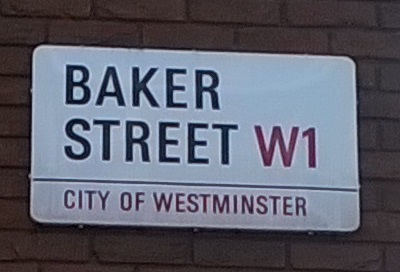



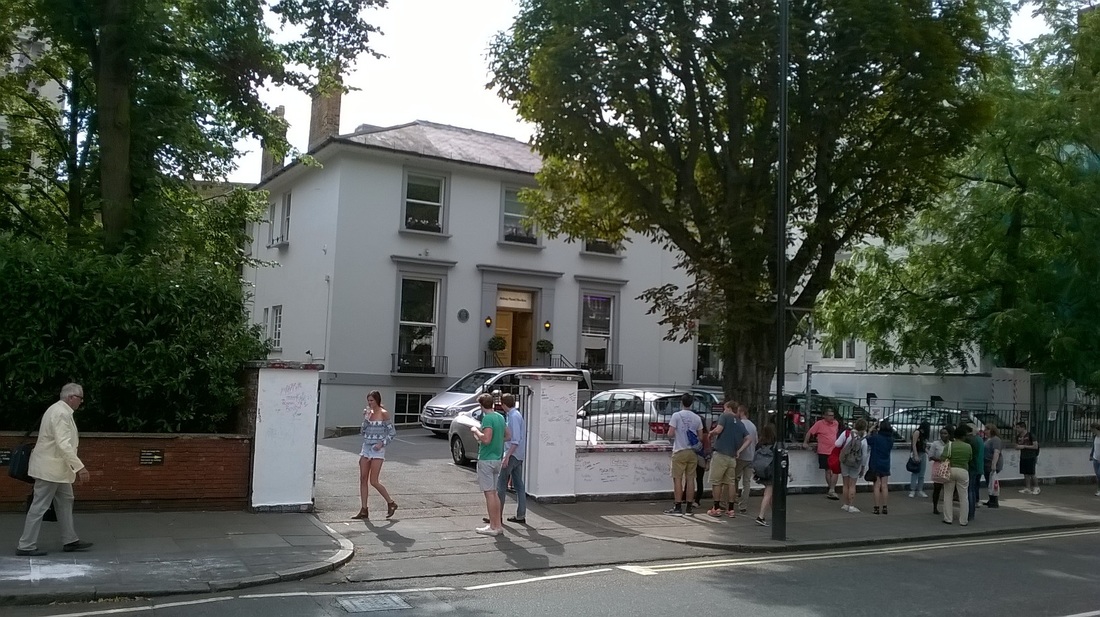







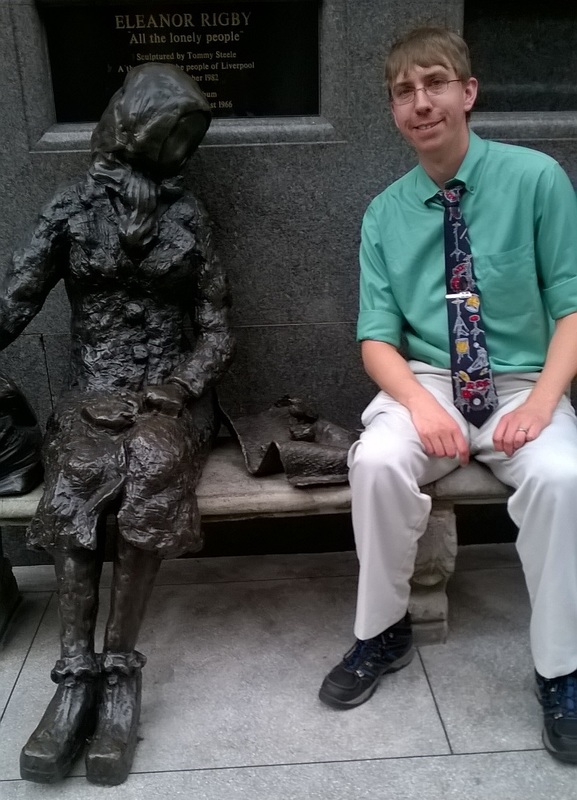
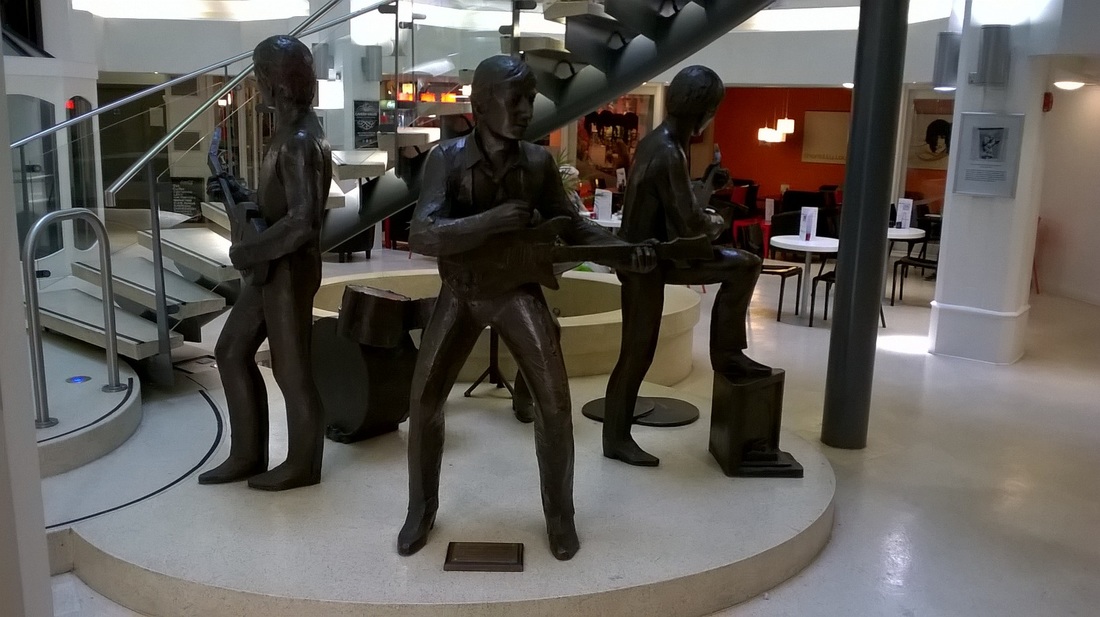
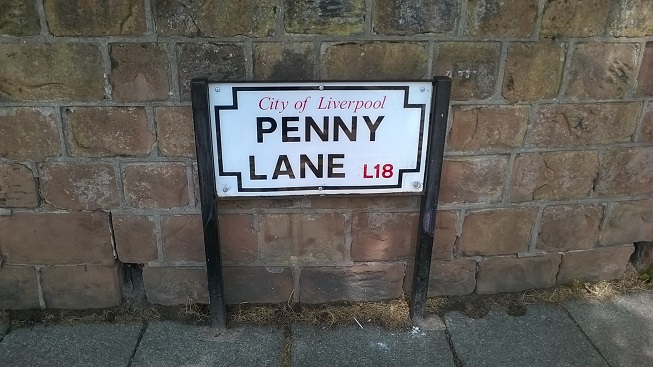






 RSS Feed
RSS Feed
